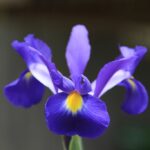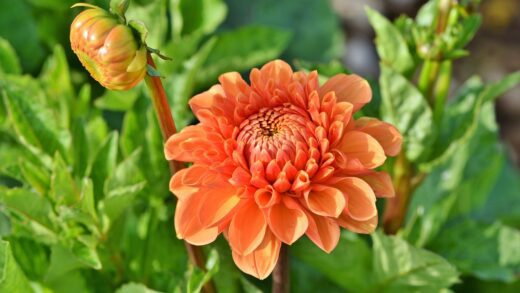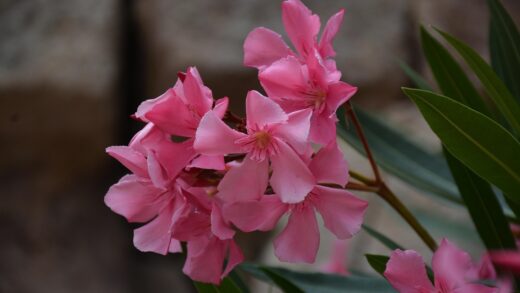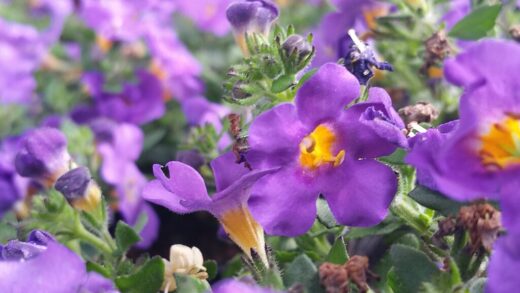Pruning is a thoughtful dialogue between the grower and the tree, a practice that, when done correctly, can enhance the sweet chestnut’s natural form, improve its health, and significantly increase its productivity. It is both a science and an art, requiring an understanding of how the tree grows and how it will respond to each cut. The goals of pruning change throughout the tree’s life, from establishing a strong and balanced structure in its youth to maintaining vigor and light penetration in its maturity. Proper pruning is not about forcing the tree into an unnatural shape but about working with its growth habits to create a stronger, healthier, and more fruitful specimen.
The objectives of pruning
The reasons for pruning a sweet chestnut tree are multifaceted and evolve as the tree matures. For young trees, the primary objective is formative or structural pruning. The goal is to establish a single, strong central leader and a well-spaced framework of scaffold branches. This early guidance prevents the development of structural weaknesses, such as multiple competing leaders or branches with narrow, “V”-shaped crotches, which are prone to splitting under the weight of nuts, snow, or wind later in life. A well-structured tree is a safer and longer-lived tree.
For mature, established trees, the focus of pruning shifts to maintenance and productivity. A key objective is to improve light penetration and air circulation throughout the canopy. This is achieved by selectively thinning out crossing, rubbing, or crowded branches. Better light exposure within the canopy encourages more even ripening of nuts and can increase the overall yield by stimulating flower bud formation on inner branches. Improved airflow is also one of the most effective non-chemical methods for reducing the incidence and severity of fungal diseases, which thrive in stagnant, humid conditions.
Another critical objective of pruning at any age is the removal of the “three D’s”: dead, damaged, and diseased wood. This is a matter of basic plant hygiene. Dead or dying branches serve no purpose and can be entry points for wood-boring insects and decay-causing fungi. Broken branches from storm damage should be cleaned up with a proper pruning cut to allow the tree to heal the wound efficiently. Promptly removing any wood that shows signs of disease, such as the cankers associated with chestnut blight, can sometimes halt the spread of the infection and save the tree.
Finally, pruning can be used to manage the size and shape of the tree, although this should be approached with caution for a large species like the sweet chestnut. It can be used to remove lower limbs to provide clearance for mowing or passage underneath the tree. It can also be used to correct imbalanced growth. However, attempting to keep a sweet chestnut tree artificially small through constant, heavy pruning is generally a losing battle and can be detrimental to its health. It is far better to plant the tree in a location where it has the space to reach its natural size.
Best time of year for pruning
The timing of pruning is one of the most important factors in determining the tree’s response and ensuring its health. The vast majority of pruning on a sweet chestnut should be performed during the dormant season, typically in late winter or very early spring, before the sap begins to rise and the buds start to swell. There are several significant advantages to pruning during this period. With the leaves absent, the entire branch structure of the tree is clearly visible, making it much easier to assess the tree’s form and decide which branches need to be removed.
Pruning during dormancy is also less stressful for the tree. The tree is not actively growing, so removing a branch does not take away from its immediate energy-producing capacity. Furthermore, the risk of “bleeding” or excessive sap flow from the cuts is minimized. Perhaps most importantly, many pests and disease pathogens are inactive during the cold winter months. Pruning at this time gives the wounds a chance to begin the healing process before these harmful organisms become active in the spring, reducing the risk of infection.
While dormant pruning is the rule for major structural work, there are some exceptions. The removal of dead, damaged, or diseased wood can and should be done at any time of year it is discovered. There is no benefit to leaving a broken or diseased limb on the tree until winter. Additionally, light summer pruning can be performed to remove suckers growing from the base of the trunk or vigorous, unwanted vegetative shoots, often called water sprouts, that can sometimes erupt from the main branches. This minor summer work should be done sparingly, as it removes active, energy-producing leaves.
It is crucial to avoid pruning in the autumn. At this time of year, decay fungi are releasing a high number of spores, and the tree is trying to store energy in its roots for the winter, not heal wounds. Cuts made in the autumn tend to heal very slowly, leaving the tree vulnerable to infection throughout the winter. Waiting until the coldest part of the winter has passed, but before spring growth begins, provides the ideal window for the main pruning tasks.
Techniques for young trees (formative pruning)
The pruning done in the first few years of a sweet chestnut’s life will have a lasting impact on its future strength and structure. The goal is to develop a modified central leader system. For the first two to three years after planting, the focus should be minimal, primarily removing any broken or damaged branches and establishing a dominant single trunk, or leader. If two stems are competing to be the main leader, the weaker one should be subordinated by cutting it back or removed entirely.
After the tree is well-established, typically in its third or fourth year, the process of selecting and developing the main scaffold branches can begin. These will become the primary limbs that form the tree’s main structure. Choose three to five strong, healthy branches that are well-spaced both vertically and radially around the trunk. Ideally, they should have wide angles of attachment to the trunk (closer to horizontal than vertical), as this creates a much stronger union. Remove branches that are too close together or have weak, narrow attachment angles.
As the tree grows taller, this process can be repeated to create a second tier of scaffold branches higher up the trunk. Throughout this formative period, it is important to keep the main leader dominant by shortening any competing upright stems. Any branches that are growing faster than the leader or that are becoming too thick relative to the trunk’s diameter should also be shortened or removed. This ensures that the tree’s energy is directed towards building a strong, central structure.
This early pruning should be done with a light touch. It is a gradual process over several years, and it is better to make several small cuts over time than to remove a large amount of the tree’s canopy at once. The goal is not to create a perfectly symmetrical tree, but to correct potential structural flaws and guide the tree towards a strong, open framework that will support a heavy crop and withstand the elements in the future.
Pruning mature, nut-bearing trees
Once a sweet chestnut tree has an established structure and has reached bearing age, the pruning strategy shifts from development to maintenance. The primary goal is to keep the canopy open and productive. This involves an annual or biennial inspection during the dormant season to selectively thin out branches. The focus should be on removing branches that are crossing, rubbing against each other, or growing back towards the center of the tree. This thinning improves light penetration and air circulation, which are key for nut quality and disease prevention.
The removal of dead, damaged, and diseased wood remains a priority. This is an ongoing task that contributes to the overall health and safety of the tree. It is also important to manage water sprouts, which are vigorous, unbranched shoots that grow straight up from the main limbs. These shoots are generally not productive and can quickly create a crowded, shaded canopy. They should be removed cleanly at their point of origin during either the dormant season or in the summer.
When removing larger limbs on a mature tree, it is essential to use the proper three-cut method to prevent the weight of the branch from tearing a strip of bark down the trunk. The first cut is an undercut, made about 30 centimeters from the trunk, about a third of the way through the branch. The second cut is made from the top, slightly further out than the undercut, cutting all the way through the branch. This removes the weight of the limb safely. The final cut is then made to remove the remaining stub, cutting just outside the branch collar—the swollen ring of tissue where the branch joins the trunk.
It is important to avoid over-pruning a mature tree. A general rule of thumb is to never remove more than 25-30% of the living canopy in a single year. Heavy pruning can shock the tree and stimulate a defensive response of dense, unproductive vegetative growth. A gentle, consistent approach of thinning and cleaning the canopy every year or two is far more beneficial than sporadic, aggressive pruning. The goal is to maintain the tree’s health and productivity for the long term.
Coppicing and special pruning techniques
Coppicing is an ancient woodland management technique where a tree is cut down to near ground level, stimulating it to send up multiple new shoots from the stump, or “stool.” Sweet chestnut responds very well to coppicing and has been managed this way for centuries, particularly in Europe. The resulting new stems grow very quickly and straight, and they can be harvested on a cycle of 15 to 25 years for use as fence posts, firewood, or other small timber products. This is a sustainable method of harvesting wood that keeps the root system alive, allowing for repeated harvests over a very long period.
Pollarding is a similar technique to coppicing, but the cuts are made higher up the trunk, typically at a height of two to three meters. This creates a permanent, stout trunk with a “knuckle” at the top from which new shoots resprout after each cutting cycle. The main advantage of pollarding over coppicing is that the new growth is above the reach of browsing animals like deer. Historically, this method was used to produce a regular supply of firewood or fodder for livestock while allowing the land beneath the trees to be used for grazing.
While coppicing and pollarding are traditional woodland management techniques, they are generally not used for trees that are being grown for nut production. The constant cycle of cutting and regrowth prevents the tree from reaching the size and maturity needed to produce a significant harvest. These techniques are specifically for wood production. Attempting to manage a nut-producing tree in this way would be counterproductive to the primary goal of obtaining a nut crop.
The tools used for pruning are also an important consideration. For small branches, a sharp pair of bypass pruners or loppers is sufficient. For larger limbs, a curved pruning saw is the best tool. All tools should be kept sharp to ensure clean cuts that heal quickly, and they should be disinfected with rubbing alcohol or a bleach solution between cuts, especially when removing diseased wood, to prevent the spread of pathogens from one part of the tree to another, or from one tree to another.




















